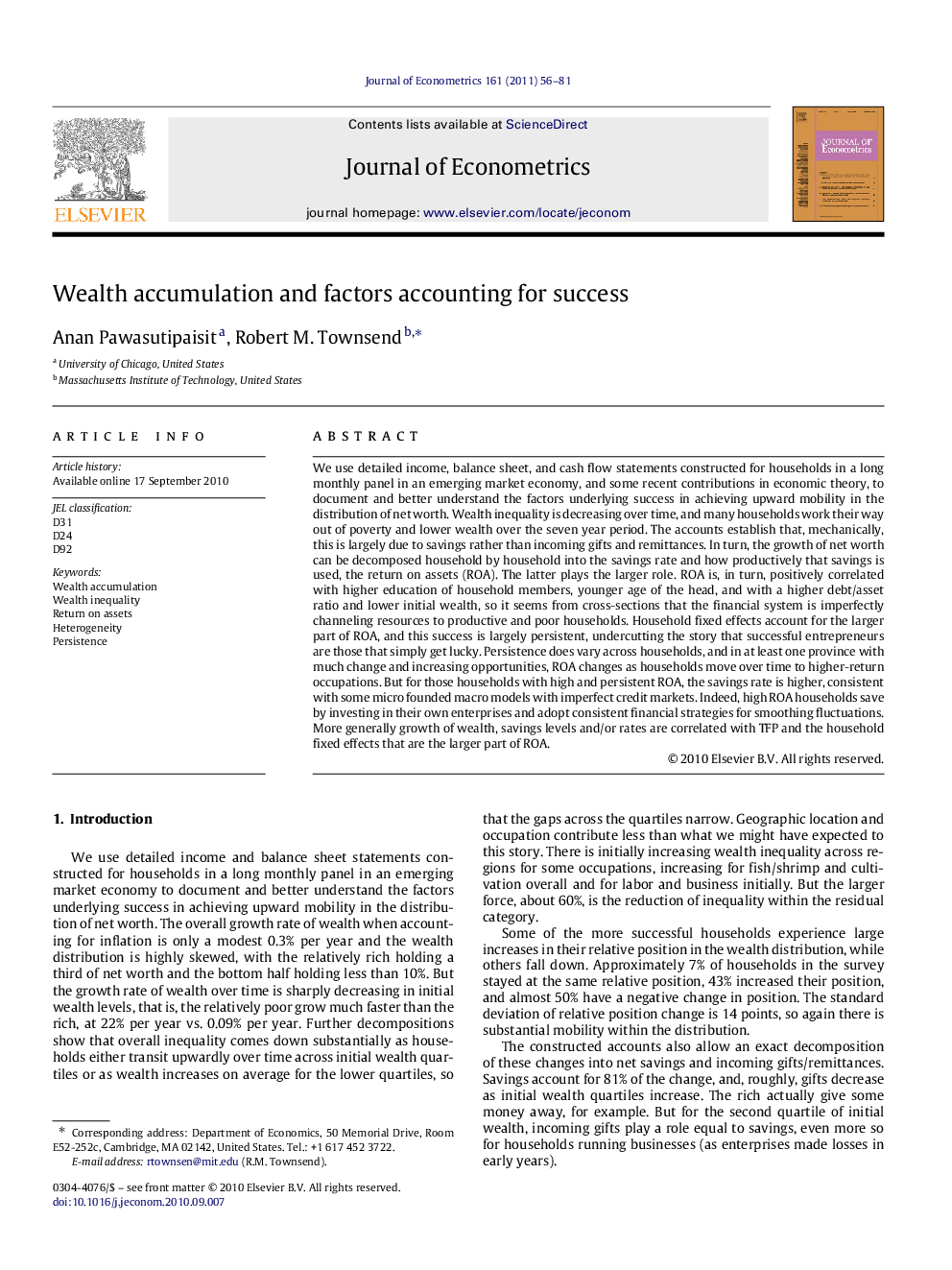| Article ID | Journal | Published Year | Pages | File Type |
|---|---|---|---|---|
| 5096635 | Journal of Econometrics | 2011 | 26 Pages |
Abstract
We use detailed income, balance sheet, and cash flow statements constructed for households in a long monthly panel in an emerging market economy, and some recent contributions in economic theory, to document and better understand the factors underlying success in achieving upward mobility in the distribution of net worth. Wealth inequality is decreasing over time, and many households work their way out of poverty and lower wealth over the seven year period. The accounts establish that, mechanically, this is largely due to savings rather than incoming gifts and remittances. In turn, the growth of net worth can be decomposed household by household into the savings rate and how productively that savings is used, the return on assets (ROA). The latter plays the larger role. ROA is, in turn, positively correlated with higher education of household members, younger age of the head, and with a higher debt/asset ratio and lower initial wealth, so it seems from cross-sections that the financial system is imperfectly channeling resources to productive and poor households. Household fixed effects account for the larger part of ROA, and this success is largely persistent, undercutting the story that successful entrepreneurs are those that simply get lucky. Persistence does vary across households, and in at least one province with much change and increasing opportunities, ROA changes as households move over time to higher-return occupations. But for those households with high and persistent ROA, the savings rate is higher, consistent with some micro founded macro models with imperfect credit markets. Indeed, high ROA households save by investing in their own enterprises and adopt consistent financial strategies for smoothing fluctuations. More generally growth of wealth, savings levels and/or rates are correlated with TFP and the household fixed effects that are the larger part of ROA.
Related Topics
Physical Sciences and Engineering
Mathematics
Statistics and Probability
Authors
Anan Pawasutipaisit, Robert M. Townsend,
